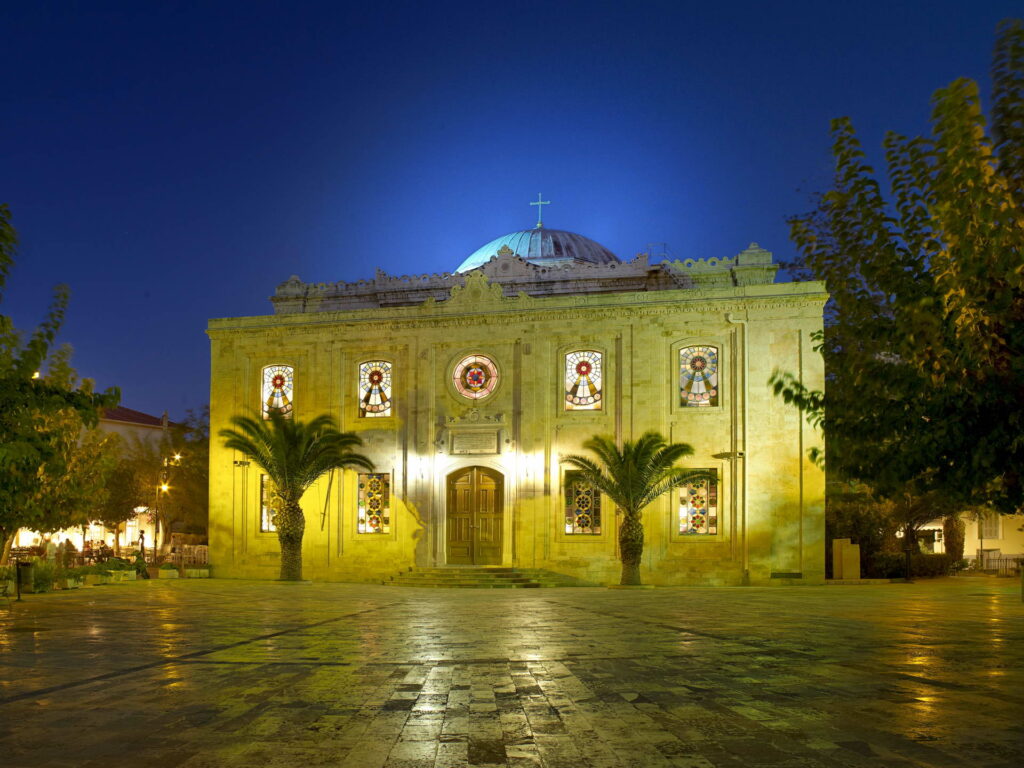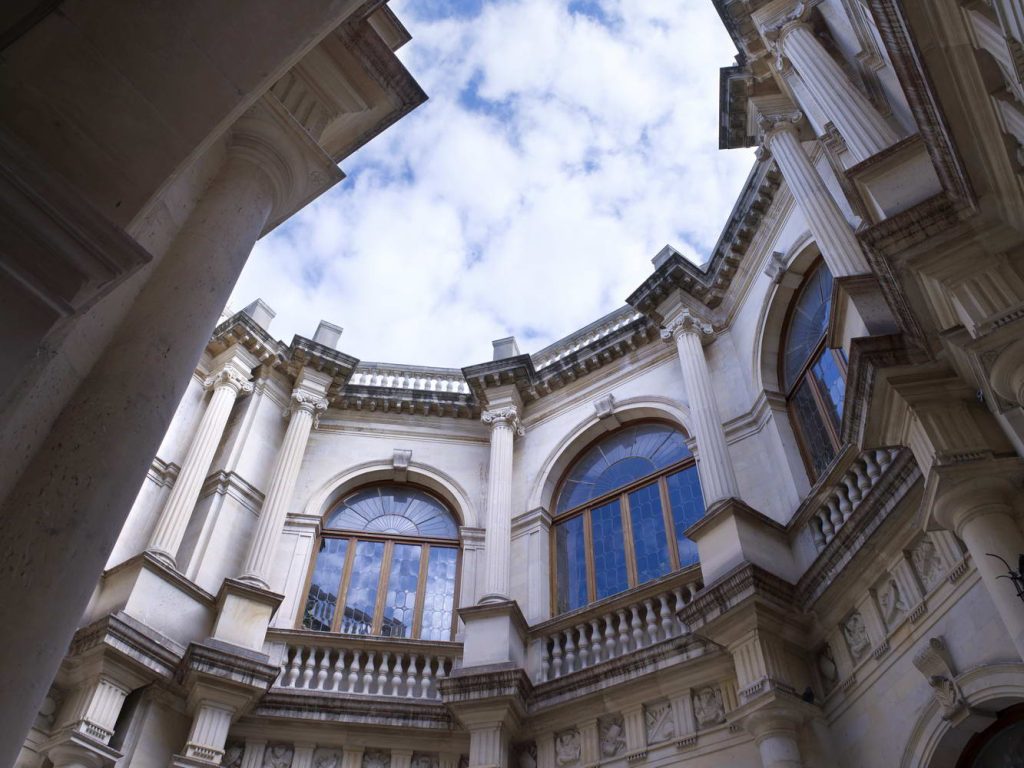Route
25th August street, Church of St Titus, Loggia - Heraklion Town Hall, Basilica of St Mark, Morosini Fountain, Museum of Christina Art, Cathedral of St Minas, Church of St Matthew, Cultural Centre, Venetian Fortification

25th August street is the main road connecting the port to the city centre. It is considered to be one of the most significant roads throughout Heraklion's long history.

Church of St Titus (first bishop of Crete) is one of the most interesting religious monuments in the centre of the city. The scull of the Saint is kept at the church.

Loggia - Heraklion Town Hall is housed in the reconstructed building of Loggia - Armeria. The Venetian Loggia (officers & merchant’s club) was built approximately in 1628 by the Proveditor Fransesco Morosini. The Venetian armony, Armeria and the Fontana Sagredo are situated next to Loggia.

Basilica of St Mark (the patron saint of Venice) is the cathedral church that hosts the Municipal Art Gallery. From its initial construction in 1239 until 1956, when restoration work began, the monument underwent numerous alterations.

Morosini Fountain (Lions fountain), built by Francesco Morosini in 1628, is the best known fountain of the city. Following preservation works, the fountain is currently one of the most impressive Venetian monuments in the city center.

Museum of Christian Art is hosted in the cruciform church of Saint Catherine in the centre of Heraklion, near the old and the present Metropolitan church of St. Minas. The main theme of the exhibition is the ecclesiastical art developed in Crete from the 14th until the 19th century with important icons of Michael Damaskinos.

Cathedral of St Minas. The new cathedral of the city was built next to the Small Chapel of St Minas and of the Virgin Mary Pandanassa (of the Presentation) and it was consecrated to Saint Minas, patron saint and protector of Heraklion. Work on the church began in 1862 but was not completed until 1895.

Church of St Matthew it was built in the early 17th century, on the site of an earlier Byzantine church destroyed by an earthquake. Following the Ottoman conquest, it was ceded as a dependency to Orthodox Monastery of Saint Catherine on Mt. Sinai, in place of Saint Catherine’s, which had been converted into a mosque. The church houses a collection of icons, including major works of the Cretan School.

Building a Cultural Conference Center in Heraklion was the best solution to address the lack of a place to host various artistic events as well as many other activities.
The complex was built near Martinengo Bastion.
The main goal set was the construction of a spacious, modern Cultural Conference Center built in line with all necessary international standards, in order to host various events such as concerts, theatrical performances, operas, ballet performances, art exhibitions, exhibitions of cultural property and conferences.
The complex was built according to all the conditions set out and is one of the city’s landmarks since it includes a large concert hall, some smaller stages and administrative offices.
Its building facilities along with its architectural design and technical equipment have always been attracting the attention of numerous stakeholders of the art world from Crete or the Mediterranean region.
The exterior of the building is fully in harmony with the city’s historical context. It is a building of exceptional infrastructure and possibilities, a Cultural Center that is well worth visiting.
Website: cccc.gr

Venetian Fortification is still standing today, embracing the old town was designed in line with the rules of the new defensive system with Bastions. The outside perimeter was surrounded by a deep ditch. Construction was completed in the early 17th century. Thanks to its new walls, Candia was able to resist the siege by the Ottoman army for over 20 years (1648 - 1669).


